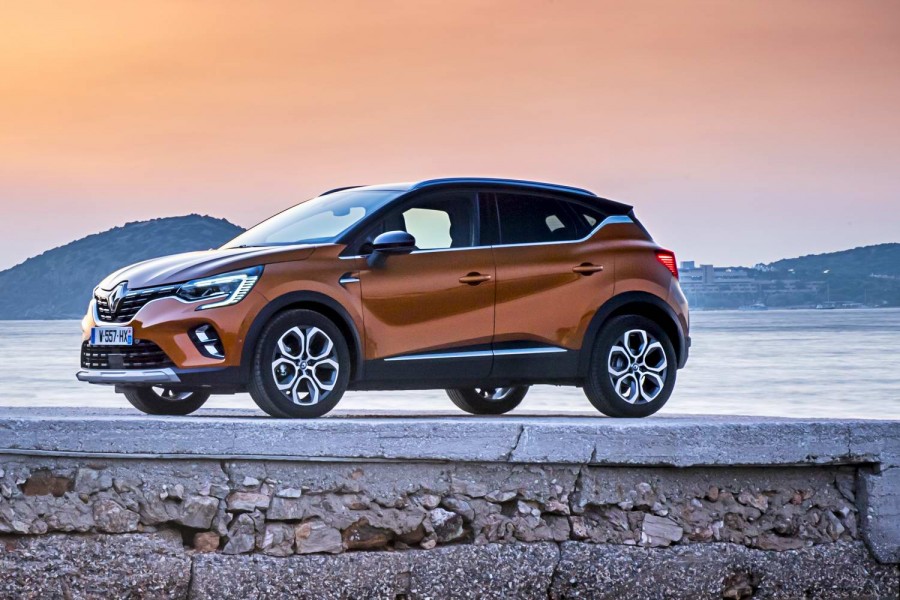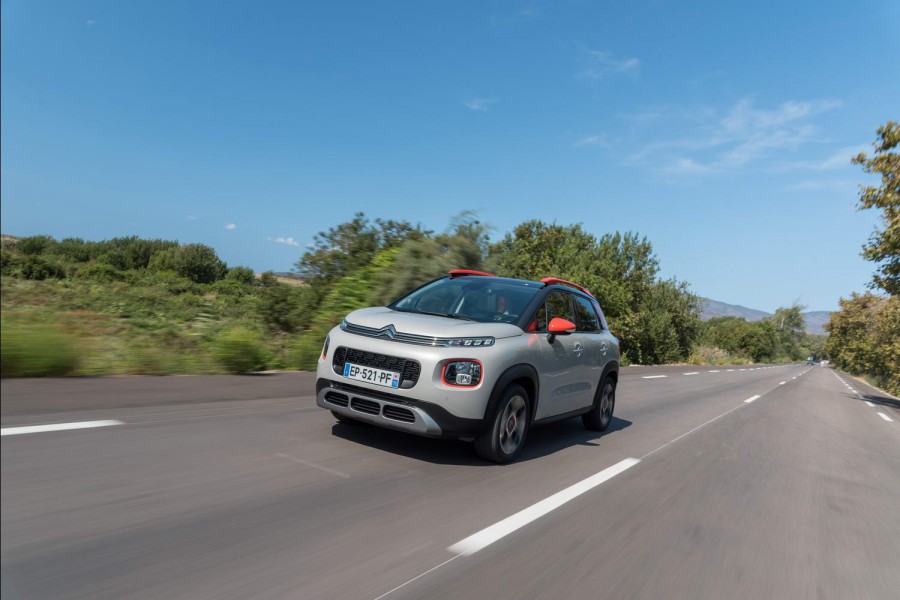With small crossover sales exploding, Renault has ramped up the Captur's quality levels, as well as its cabin space, for customers who are rapidly moving away from family hatchbacks and into these small SUVs.
In the metal
In terms of exterior styling, there's nothing new here. Or at least, hardly anything at all. The new Captur looks - almost to the millimetre - like the old one. If you want to tell new from old, you'll have to look closely. The rear pillar is different - instead of sweeping up sharply to meet the roof, it turns over into a flatter line, giving more of a 'floating roof' look to the Captur. At the front, you'll have even more trouble. Really, only the more prominent grille and the new all-LED lights (as standard) that incorporate the C-shaped daytime running lights into the main units are especially different. Around the back, the change is a little more profound, with big C-shaped brake lights that form slim commas at either side of the boot, and which make the rear of the Captur look rather sharp.
In the cabin, the changes are simply massive. The old Captur basically used the same cabin as the old Clio and suffered for doing so - quality was never all that good, and such things as style were severely lacking. Owners, as well as professional critics, rather hammered this point home to Renault. With many Captur buyers trading down from family hatchbacks, where quality standards have been much higher in recent years, it simply wasn't good enough.
Fair dos to Renault; it has responded to such criticism with aplomb. As before, the Captur uses essentially the same interior as the Clio, but that's no longer a demerit. The new Captur's cabin (just as with the new Clio) looks great and seems to be made of very high-grade materials. The big, portrait-oriented touchscreen in the centre of the dash looks good, as do the all-digital instruments. Soft-touch surfaces are everywhere and, in our S-Edition test car, the seats were wrapped in good quality leather, as was the steering wheel and gearshift.
There are caveats. S-Edition is the top-spec model for Ireland, and even then you have to spend extra to have the full-width, ten-inch digital dials; a seven-inch screen is standard on this model. Lower-spec versions make do with analogue dials, and a seven-inch touchscreen.
There's a second caveat - while the materials used are good, we did notice that some parts (the centre console in particular) seemed to be fitted rather loosely, so it'll be interesting to see how this Captur stands up to extended daily use.
Space has improved over the last model, though. The cabin is a little wider, and there's an extra 17mm of rear seat legroom, which is enough to raise space from just about adequate, to decent. That rear seat slides back and forth by as much as 160mm, meaning you can choose between more boot space, or more passenger space. With the seat fully forward, the boot measures a generous 530 litres.
Interestingly, Renault Ireland expects the 1.5 diesel engine to account for most (56 per cent) of Captur sales when the new model arrives in Ireland next February. That's because, apparently, the new diesel NOx emissions tax seems to be reassuring buyers that their diesel choices are actually quite clean, so it's ameliorating some of the bad publicity surrounding diesel power.
The 1.0-litre 100hp TCe petrol three-cylinder will make up most of the rest of Irish sales, with our test car's 1.3-litre 130hp turbo petrol occupying bit-part status. There will be a plug-in hybrid model, arriving next year, but its electric-only range isn't enough to qualify for the vehicle registration tax rebate (it's just 45km, and needs to be over 50km to qualify) so it may well be hobbled in Ireland by a too-high price tag.
Driving it
If you've come here expecting a thrilling, dynamic, driving experience, well I'm sorry to disappoint you. Most buyers of small crossovers simply don't care that much about vehicle dynamics (42 per cent say that they buy purely on looks) so I guess we should just be thankful that Renault has made the Captur drive as well as it does.
The steering has surprisingly good weight and a little bit of feel, so although the Captur's natural response to any tight corner taken too quickly is to understeer doggedly, it feels reasonably responsive within its low limits. The ride quality on our test car was not especially great, but it was on the optional 18-inch wheels, and smaller rims would probably dial a lot of that out. Refinement is fine, although the 1.3 engine has an occasional rough edge to it. It also has rather inconsistent throttle response - sometimes, the generous 240Nm of torque would flow freely. At other times it seemed to stutter and hesitate. Most likely it's down to engine mapping that ensures that the Captur puts in good numbers on the stricter WLTP economy and emissions regulations. We also had a brief spin in the 1.3 155hp version, with the seven-speed EDC dual-clutch gearbox. This transmission was actually the best-tuned version of Renault's self-shifter that we've yet tried, but the engine didn't feel at all like living up to its power billing, so it's unlikely to be worth your while trading up.
None of this should be surprising - the Captur has clearly been engineered to be safe and sure-footed, but not especially exciting. To have expected anything else from a car in this class would have been foolish and, in fairness, it's good at doing what it should do: nipping easily around town (aside from a surprisingly large turning circle) and cruising comfortably on main roads.
What you get for your money
We don't have full pricing for the Captur yet, but it's likely to start with a base price of around €21,995. With that will come standard kit including autonomous emergency braking, all-round LED lights, a speed limiter, lane departure warning, automatic wipers and the seven-inch touchscreen with both Apple CarPlay and Android Auto. That's pretty decent equipment, and the walk-up price for the Iconic and S-Edition versions should be in the region of €2,500 or so, making the Captur decent value. Plus, for a very similar price to that of the outgoing version, you're getting a much more sophisticated vehicle.
Summary
That the new Renault Captur is a little less than thrilling is perhaps only to be expected - cars in this class generally aren't. What it is, is handsome and well-equipped, with a high-quality (so far, anyway) cabin, decent space for both passengers and luggage, a likely good safety rating and a none-too-shabby driving experience. Can't say fairer than that, really.












































